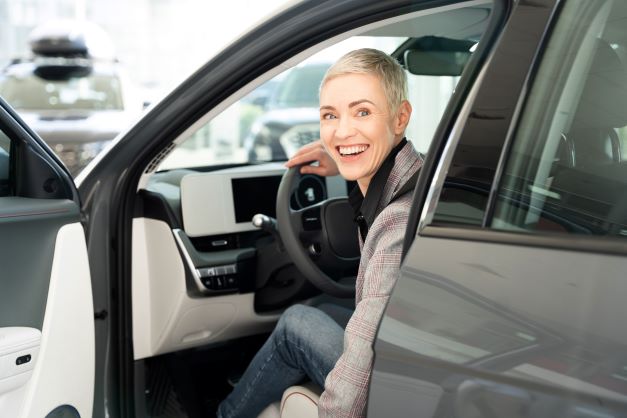Susan Stefanovich, Zondits staff, 7/5/2022
To improve electric vehicle adoption, governments and utilities should implement programs that incorporate point-of-sale incentives that are easy for buyers to access and effectively improve affordability. Electric vehicle adoption has not been fast enough to meet the climate goals set forth by many companies and governments, partly due to the high first cost. Post-sale rebates are often used as incentives, but are not timely enough to get potential buyers over the high cost hurdle.
Offering customers financial incentives through a program is a great way to speed EV adoption. But for most EV programs, customers are only eligible to apply for rebates after purchasing the vehicle or charging equipment. The problem is that post-purchase EV rebates don’t help people reduce the up-front cost of their purchase and thus do not promote high rates of adoption amongst all populations of buyers. Further complicating the situation is the administrative burden placed on the customer to pursue an incentive (people just don’t enjoy filling out rebate applications). Nonetheless, post-sale approaches have become standard practice for government and utility programs attempting to increase EV adoption. If we look at the conventional car sales model, it’s done differently. Buyers receive manufacturer and other incentives upfront in the form of “instant rebates” or subsidized loan/lease terms. These approaches reduce the purchase price and are favorably viewed as a discount by the buyer.
The solution is for entities running incentive programs to collaborate with dealers to implement point-of-sale incentives that are consistent with automobile industry practice. This incentive structure is especially valuable to low-to-moderate income (LMI) populations, where receiving a discount at the point of purchase makes the EV more affordable. It’s also essential that LMI customers, who may qualify for funds through multiple programs, can access all incentives from the dealer as a single source. Dealers are a great channel to promote rebate programs to people who were not considering an EV. Salespeople can provide program information and help the customer make an informed decision.
For example, the Connecticut Clean Air program currently offers a point-of-sale rebate at the dealer. The program is being expanded to include additional income-qualified incentives via vouchers to be used at the dealer at the time of the sale. This is intended to increase participation among lower income buyers. The program provides a better and more affordable experience for customers and puts dealers in a central role, helping them increase sales.
The bottom line is that individual utility and state-wide programs that offer EV incentives at the point of purchase are more likely to provide a better customer experience, increase program participation and achieve targeted goals toward EV adoption.
Read more about EV adoption:
